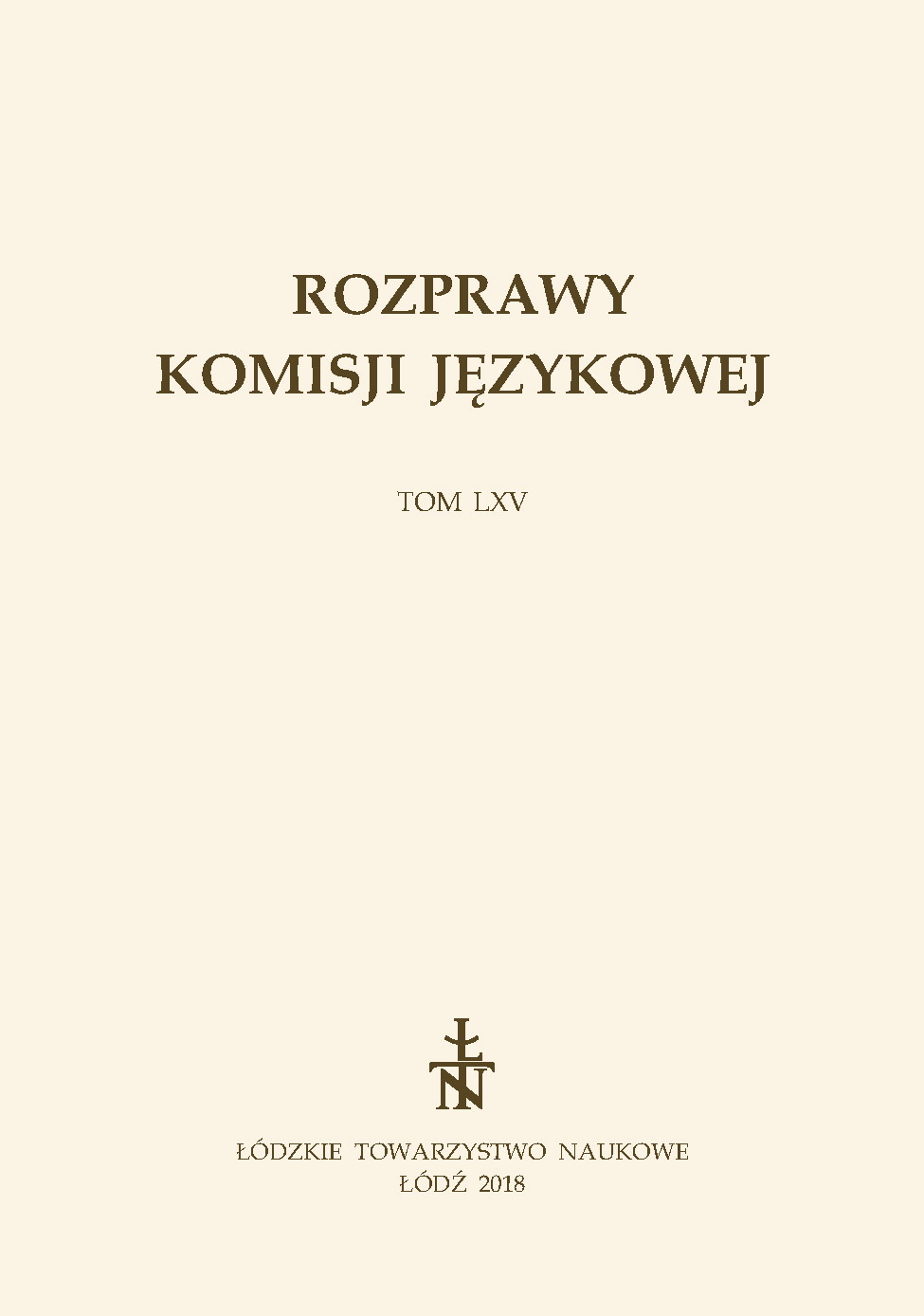Древние восточнославянские двучленные имена
Old East Slavonic two-part names
Author(s): Jan SosnowskiSubject(s): Theoretical Linguistics, Applied Linguistics
Published by: Łódzkie Towarzystwo Naukowe
Keywords: anthroponymy; personal names; two-part names; Old Russian; East Slavonic languages; proper names
Summary/Abstract: Two-part names, most of which were composites, were a very active and widespread element in Slavic personal naming in the past (cf. e.g. Old Russian Izjaslavъ, Jaroslavъ, Svjatopolkъ, Volodimerъ, Vsevolodъ, Zavidъ). Their exceptional popularity in Old Russian weakened decidedly in the 14th–15th centuries. However, a small number of names continued to be used to a greater or lesser extent – in particular two names Bogdanъ and Volodimerъ/Volodimirъ (not counting the short form Borisъ from Borislavъ), cf. also Bogdana f., Nekrasъ, Nemirъ, Ratmirъ. This work contains an overview of previous research on Slavic anthroponymy, including Polish and Russian, and beginning with the first scientific work of Franz Miklosich in 1860. The main part of the article is an alphabetical list of East Slavic two-parts names, along with the location of their source. The author used as sources many works on the anthroponymy and toponymy of Old Russian, Russian, Ukrainian, and Belarusian, as well as dictionaries of personal names. The alphabetical list of two-part names includes over 500 men’s names and 42 women’s names. A significant portion of such names remained in the language in the form of toponyms; these are also included in the list and are marked with an asterisk, cf. *Dorogobudъ and the city Dorogobužь.
Journal: Rozprawy Komisji Językowej
- Issue Year: 2018
- Issue No: 66
- Page Range: 461-496
- Page Count: 36
- Language: Russian

